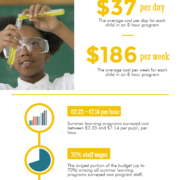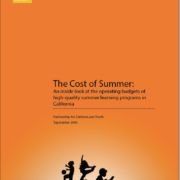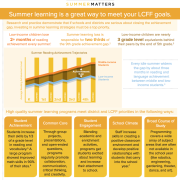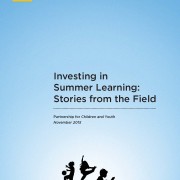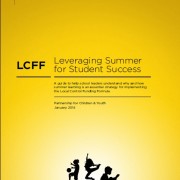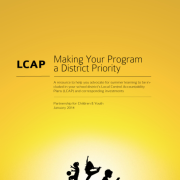Cost of Summer Infographic
While middle and upper-income children are able to keep learning each summer by visiting museums and camps or going on family vacations, children from low-income families are falling behind. High-quality summer learning programs are a cost-effective way to prevent summer learning loss and close both the opportunity and achievement gaps.

